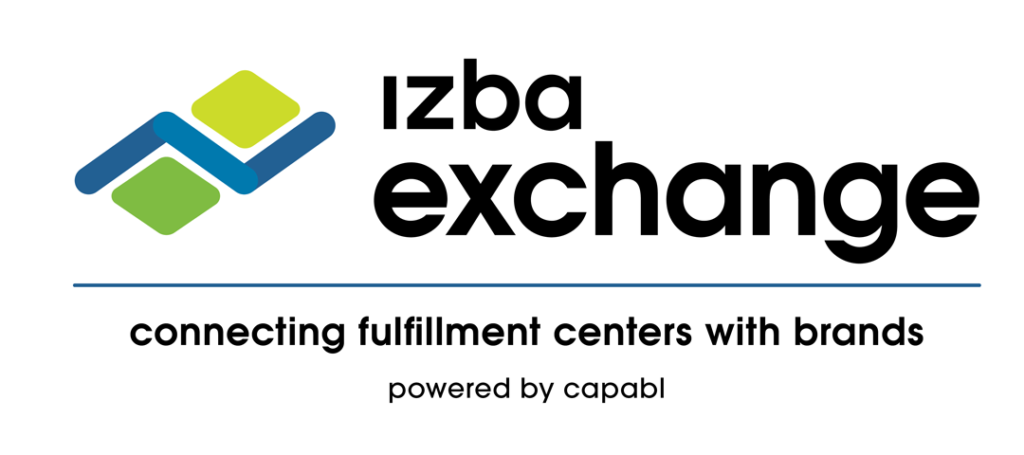I was recently told by an industry insider that they expect half of today’s startups to shut down in the next 12 months. One of the most difficult decisions that any founder, investor, or employee will make is when to quit. We often hear stories of founders who endured great pain before finding success, such as John Foley of Peloton (mortgaged his house and maxed out his credit cards to fund his business), Tobias Lutke of Shopify (lived in his girlfriend’s parents basement for several years), and the founders of Airbnb (famously tried to sell cereal and all other sorts of side gigs before finding their business model). We love these stories and we talk about them on podcasts and at conferences. However, the reality is that most small businesses fail.
Many people struggle with the decision to quit due to the sunk cost fallacy. This fallacy leads us to believe that our past investments of time, money, and effort dictate our future decisions. However, recognizing this fallacy and focusing on the present can help us make more rational decisions.
I remember early on in my career at Unilever that we were working on a new type of deodorant that was going to be revolutionary (as far as deodorants are concerned). The innovation? The deodorant stick was completely clear and wouldn’t leave any marks on clothes. The project had been greenlit and pulled forward as a strategic bet for the business with much fanfare. As a result thousands of hours were spent by a dedicated team in R&D, Production, Planning, and Marketing, Finance, etc to bring this product to life.
As we approached the launch date we learned that there was an unexpected quirk in the manufacturing process; basically as the deodorant cooled (molten deodorant is poured into the bottom of your stick to fill it), the stick basically fused to the side of the packaging. Now the “correct” way to open up a new stick of deodorant is not to rip open the top of the stick, but to instead turn the wheel until the plastic part on top comes free on its own. Traditional deodorant was strong enough to survive being opened the wrong way, but doing so with this innovation would result in shattering the deodorant stick inside the packaging.
We did tests and found that this was the case something like 70% of the time. Fearing the flood of quality complaints that would have inevitably followed we scrambled to find ways to somehow avoid this mess. We looked at everything from better ways to educate people on the right way to open a stick. We investigated what it would take to pre open each stick after pouring. We calculated the cost of sending out a product with a known consumer complaint. Ultimately we commissioned some mechanical rigs that would “burp” about a dozen sticks of deodorant at a time just enough to remove the pressure on the outer wall of the packaging. It wasn’t elegant, but we had a solution that we could take to the business. As a side note, never ask people in the supply chain if something is possible- the answer is always yes- The correct question is should we do something.
After we had busted our butts to get a viable solution in place, I was absolutely stunned when the leadership team at Unilever decided to kill the project. After all this was one of our big bets for the year. We had already secured space with every major retailer. We had invested an enormous amount of money into this effort, had marketing assets in place, and were sitting on $10M worth of inventory. Despite all the reasons to continue, this was 100% the right call.
I’m sure we would have figured out a work around to our issue eventually, but the reality was that the costs we would have incurred in organizational churn, reputational risk, and consumer appeasements likely would have dwarfed any positive impact we might have expected from the launch. Continuing down the path that we were on, wasn’t somehow going to result in a refund of all of that past effort and work. Was this a tough decision? Yes. Was all of that effort wasted? Sure. Did making the hard right choice spare us from bigger issues and heartache? Absolutely.
Choosing to Quit vs Quitting to Choose
Did you know that Apple launched their first digital assistant in 1993? It’s true, before Siri and ChatGPT, Apple Newton was a personal assistant that could recognize your handwriting and had a touchscreen display. Apple killed the project in 1998.
Did you know that Google launched their first version of the Metaverse in 2008? Google Lively was a 3D world where users could create Avatars and interact with one another. It was killed after only 4 months. They followed it up with Tilt Brush in 2016 that allowed users to paint in VR. This one shut down in 2021.
Quibi launched a short form video platform in 2020 at the start of the pandemic only to flame out 6 months later and watch Tiktok gain a national following.
Juicero raised an embarrassing amount of cash before going out of business within 24 months of launch.
Fyre Festival famously failed pretty much as soon as it launched.
There is a difference between choosing to quit and being forced to quit.
Choosing to quit means that you take a sober look at an initiative and consciously deciding to unlock additional resources or time vs letting that decision be made by default. Because you have the foresight to see where something is going wrong, you can sharpen your focus, reduce your goals down to a true MVP, or course correct. You inherently have options.
When you recognize that something isn’t working but don’t have the courage to walk away and instead continue to double and triple down you act as if having your entire business go under due to lack of funding or a bad market is somehow less embarrassing than admitting that you were wrong and made a bad decision.
In some ways I get it- it’s easier to blame the economy or funding not coming through as the cause of the failure, but doing so shifts the founder from taking responsibility or learning from it and can instead lead to developing a victim mentality.
This is a difficult lesson to learn. We will all screw this up at different points in time and I’m sure we can picture a project or a memory that continued for much longer or at a much higher cost than we would have expected.
There are many reasons why a project could fail. If you take a true post mortem approach to failure, then you convert the funds that were spent (and won’t get back) from a sunk cost into tuition.
Perhaps you were too early and the market wasn’t ready (Apple Newton, Google Glass, etc)? What could you learn for next time?
Maybe you focused too much on distribution and not enough on product (Quibi or Juicero)? What’s the right balance for next time?
Maybe you were going after incumbents without significant differentiation (Google +, Amazon Destinations, Twitter #Music)? Will you be better at estimating how much cash it will take to compete?
Maybe you focused too much on vision and not enough on tactical execution (Theranos or Fyre Festival)? Maybe avoid fraud next time?
Knowing what you know now, would you do it again?
Assess whether, given your current knowledge, you would invest in the same initiative again. Avoid the sunk cost fallacy and focus on the present.
Be humble and seek diverse opinions:Seek advice from others with different perspectives to help you make an informed decision.
Recognize that your journey is rarely a straight line:Progress in startups is often unpredictable, and it’s essential to acknowledge that setbacks are part of the process.
If you decide to quit, create a plan for winding down the initiative, selling assets, helping those affected, and determining under what conditions you might return to the idea.
Be the best at failing
Here’s a list of major initiatives that Amazon has launched and killed over the past 10 years.
| Product | Year Launched | Months of Existence | What it was |
| Amazon MyHabit | May 2011 | 60 | A fashion flash sale website offering discounted designer clothing, accessories, and home goods. |
| Amazon Local | June 2011 | 48 | A daily deals platform offering discounts on local goods, services, and events in the user’s area. |
| Amazon Wallet | July 2014 | 6 | A mobile wallet app that allowed users to store gift cards, loyalty cards, and membership information. |
| Amazon Fire Phone | July 2014 | 13 | A smartphone developed by Amazon, featuring 3D features and Firefly technology for product recognition. |
| Amazon Register | August 2014 | 12 | A mobile point-of-sale system for small businesses, allowing them to accept credit and debit card payments. |
| Amazon Pop-up stores | October 2014 | 60 | Physical retail locations showcasing Amazon products and services, such as Echo devices and Kindle e-readers. |
| Amazon Destinations | April 2015 | 6 | A hotel booking service featuring handpicked hotels and getaway destinations. |
| Amazon Restaurants | September 2015 | 45 | A food delivery service that allowed Amazon Prime members to order meals from local restaurants. |
| Amazon Dash Wand | June 2017 | 36 | A handheld device that allowed users to add items to their Amazon shopping cart by scanning barcodes or using voice commands. |
| Amazon Spark | July 2017 | 24 | A social shopping platform that allowed users to share product recommendations and shop within the app. |
Let’s take a step back and dissect what happened here.
Without exception each of these products was born of some insight or idea that was sufficiently exciting for a small group of people that they couldn’t leave it alone. This small group researched the idea, refined it, and decided to stake their personal reputations on it. 100% of these ideas were sufficiently interesting that the smaller group convinced a larger group to fund the idea. Green lights were given and teams organized. I’m sure that the people on those teams did their best to work on what they thought was most important for success.
Yet despite best efforts on the parts of the team members, Amazon decided that they were ultimately better off calling it quits on each of these initiatives.
It’s easy to focus on the failures, but that only tells part of the story. Look at how your perception of the list changes when you add in the successes. Using 2014-2015 as an example, here’s the new list:
| Product | Year Launched | Months of Existence | What it was |
| Amazon Fire TV | April 2014 | Active | A digital media player and microconsole that streams digital content to an HD television and allows users to access apps and games. |
| Amazon Wallet | July 2014 | 6 | A mobile wallet app that allowed users to store gift cards, loyalty cards, and membership information. |
| Amazon Fire Phone | July 2014 | 13 | A smartphone developed by Amazon, featuring 3D features and Firefly technology for product recognition. |
| Amazon Register | August 2014 | 12 | A mobile point-of-sale system for small businesses, allowing them to accept credit and debit card payments. |
| Amazon Pop-up stores | October 2014 | 60 | Physical retail locations showcasing Amazon products and services, such as Echo devices and Kindle e-readers. |
| Amazon Fire Stick | November 2014 | Active | A compact streaming device that plugs into a TV’s HDMI port and provides access to various streaming services and apps. |
| Amazon Prime Now | December 2014 | Active | A service offering ultra-fast delivery (within 1-2 hours) on thousands of products for Amazon Prime members. |
| Amazon Destinations | April 2015 | 6 | A hotel booking service featuring hand picked hotels and getaway destinations. |
| Amazon Business | April 2015 | Active | A B2B marketplace providing business customers with a variety of products and services, including bulk pricing and invoicing options. |
| Amazon Echo | June 2015 | Active | A smart speaker featuring Amazon’s voice assistant, Alexa, which can control smart home devices, answer questions, and more. |
| Amazon Restaurants | September 2015 | 45 | A food delivery service that allowed Amazon Prime members to order meals from local restaurants. |
In a period of 24 months they launched 11 major new business lines. Less than half are still around today, but the winners include a multibillion line (Amazon Business) and a dominant position in connected speakers and smart home technologies (Echo, Fire, Fire Tv). Each of these would be considered successful and viable businesses on their own.
Does being the best at failing make Amazon a failure? Absolutely not.
There is probably no better company at failing than Amazon. They have perfected it. Jeff Bezos shared his perspective by saying “Failure and invention are inseparable twins. To invent you have to experiment, and if you know in advance that it’s going to work, it’s not an experiment”
I think that the reason Amazon is so good at failing in the right way is because they are very deliberate about defining what success is going to look like before kicking off an initiative. They know that they aren’t going to hit on every bet, but they know ahead of time what milestones need to be hit to unlock additional funding and they aren’t afraid of killing pet projects that don’t measure up (IE Fire Phone).
Before embarking on a significant endeavor, consider the following:
- Determine how much pain you’re willing to endure and for how long: Set realistic expectations and boundaries for yourself.
- Think about your big bet in terms of smaller bets: Breaking your plan into smaller milestones can help you make more informed decisions and reduce the emotional impact of quitting.
- Use a milestone-based approach for internal investing. This is likely going to become more popular as the era of free money comes to an end: Adopting this strategy can help you make rational decisions about continuing or quitting.
- Be open to changing course: Recognize that it’s often more efficient to change direction when needed rather than stubbornly sticking to an initial plan.
To determine whether it’s time to quit, consider the following steps:
- Reframe your mindset around success: Quitting does not make you a loser in the same way that not quitting doesn’t automatically make you a winner.
- Consider alternative definitions of success. A food bank may not be a very good monetary investment, but I would argue that the impact on a community or on families supersedes that criteria.
- Align on your success criteria: Determine your goals, whether it’s learning, gaining experience, having fun, or maximizing profits. This clarity will help you evaluate your current situation.







1 thought on “Is it time to call it quits on your startup?”
Pingback: Space Logistics: The Next Frontier in Global Supply Chain - izba